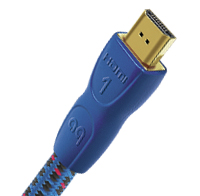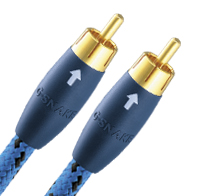Wilshire Home Entertainment has teamed up with AudioQuest to bring you some of the best audio and video cables in the industry.
 Better cables and better components cannot improve the signals they carry, but they can prevent that signal from degrading on its way to its final destination, thereby improving performance. This is why any home theater or stereo system sound better when better cables are used. The foundation on which AudioQuest is built comprises the following four fundamental elements:
Better cables and better components cannot improve the signals they carry, but they can prevent that signal from degrading on its way to its final destination, thereby improving performance. This is why any home theater or stereo system sound better when better cables are used. The foundation on which AudioQuest is built comprises the following four fundamental elements:
Solid Conductors
Solid conductors eliminate a fundamental problem caused by stranded conductors, which results in significantly better performance. The problem with stranded conductors is that they are made up of hundreds of strands bundled together to create a conductor. The strands on the outside present an ideal electrical pathway, but the ones on the inside have different electrical values. This causes the same information to be distorted differently in different parts of the cable. The bigger the bundle of strands, the bigger the problem. AudioQuests use of solid conductor eliminates the problem and prevents the original signal from degrading before it reaches its destination.
 Quality Metals
Quality Metals
The quality of the copper or silver used is another important aspect of good cable design. AudioQuest uses three qualities of copper in its interconnect, speaker and power cables, solid silver in its top-of-the-line cables, and silver-plated copper in its video and digital audio cables.
Geometry
Geometry, or the relationship between the conductors, determines the basic electrical characteristics of the cable. For example, a speaker cable with parallel conductors will have a high inductance that will make the cable sound dull and rolled off. A speaker cable with parallel conductors will also act like an antenna. AudioQuest uses Counter-Spiral geometry, which takes the group of negative conductors and spirals them on way while the group of positive conductors encases the negatives and spirals in the opposite direction. This ensures that there is minimum interaction between the positive and negative conductors, reducing distortion caused by magnetic fields that surround each conductor.
 Dielectric
Dielectric
The dielectric, or insulation, is necessary in any cable because the positive conductor(s) and negative conductor(s) must be kept apart. Unfortunately, because the dielectric interacts with the conductors whenever a current is present, it has an adverse effect on the quality of the cables performance. In order to minimize these effects, AudioQuest uses a variety of insulation materials in its cables: PVD, Foamed PE, Air Tubes, and Hard Cell Foam.
AudioQuests attention to detail, determination to manufacturer the worlds best products, and their dedication to preserving sound and picture quality is why we feel they are a perfect match for us and our customers.
